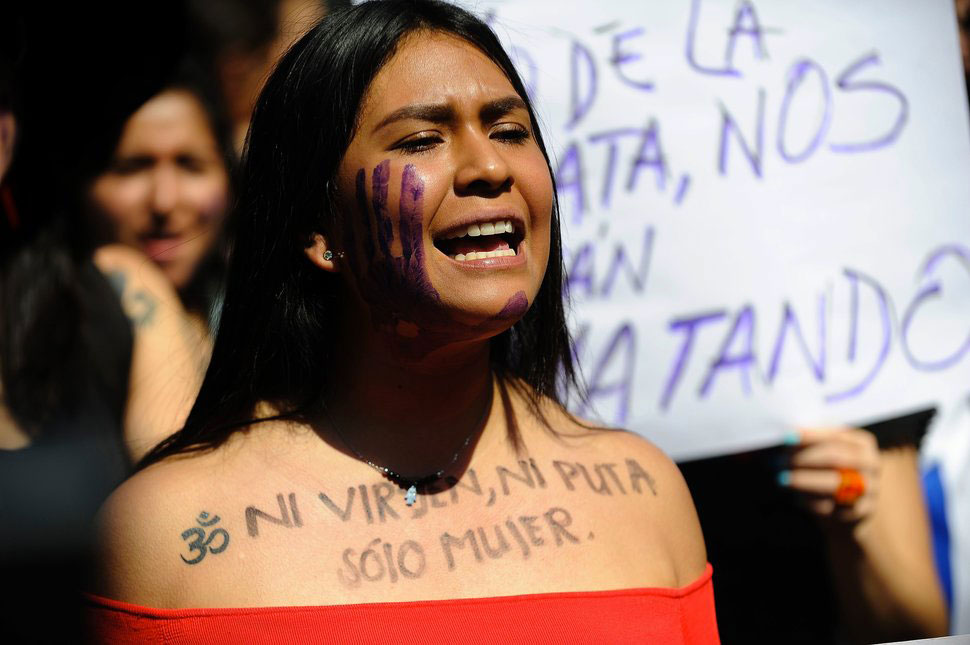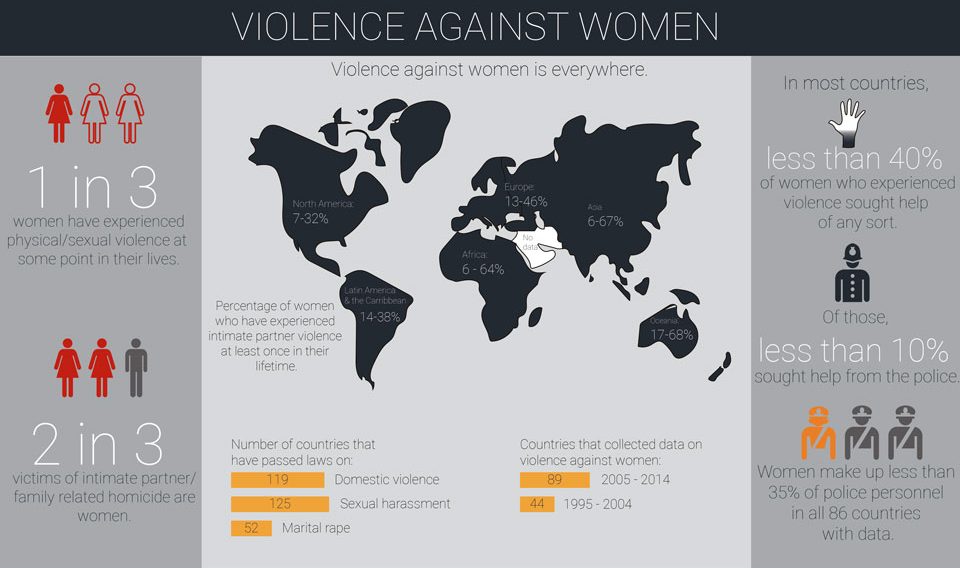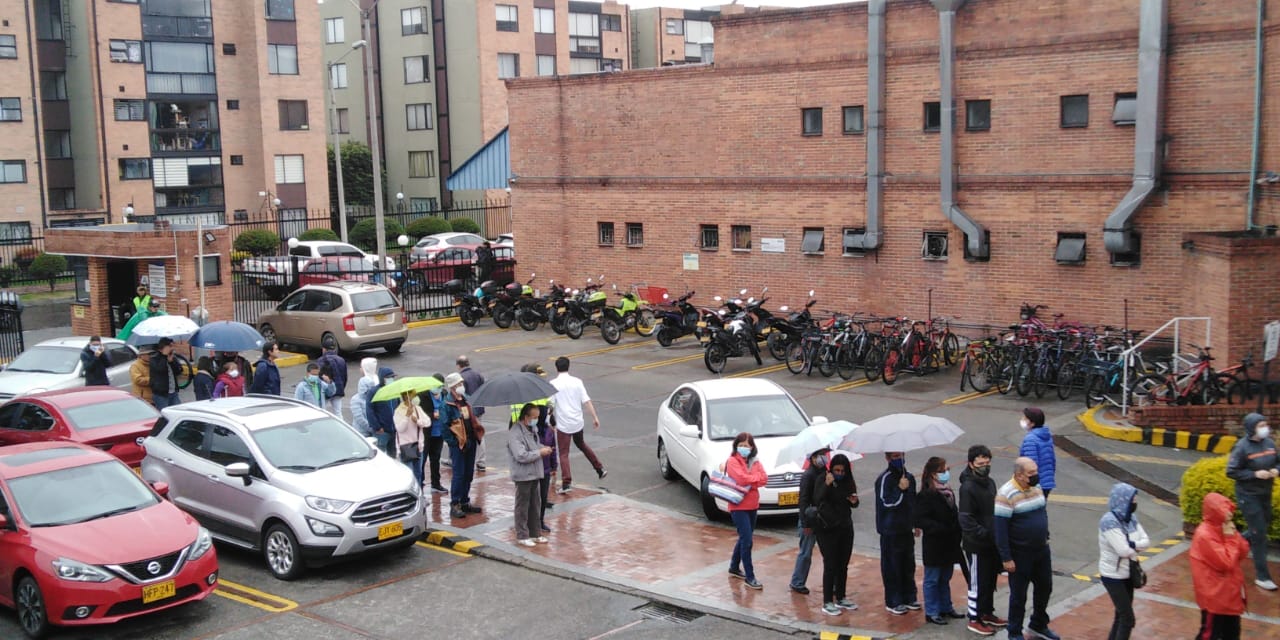
A woman protesting at a recent Ni Una Mas rally in Mexico, with the words ‘not a virgin, not a whore, just a woman’. Photo: Pedro Pardo
Isabel Agatón, a human rights lawyer who played an active role in pushing through the femicide law, tells Elly Darkin that the challenge faced by the Colombian government is still a great one.
Broadly understood as the killing of a woman by a man due to her gender, femicide is a problem faced in Latin America more than in any other region in the world. In Colombia alone an average of 73 women are murdered every month.
A year and a half has passed since Colombia passed a law (Ley 1761) to make femicide a legally defined crime, punishable with jail sentences of up to 50 years.
The proposal was initially presented to congress in August 2012, shortly after the brutal rape, torture and murder of Rosa Elvira Cely in Parque Nacional, Bogotá.
Isabel Agatón, human rights lawyer and director of CIJUSTICIA (Centre for Research in Justice and Critical Studies of Law) was instrumental in forming the proposal and ensuring it passed.
She explained to The Bogotá Post that Rosa Elvira’s case created a consensus among civil society and organisations that the state needed to condemn this type of act. “It was necessary to name the reality that existed and modify the criminal code.”
The prejudices and stereotypes that exist within institutions mean that gender-based violence is not always recognised. It is often considered the woman’s responsibility not to provoke violence, rather than the man’s responsibility not to perpetrate it.
As in most countries, the majority of femicides in Colombia are committed by the woman’s partner or ex-partner. It is a crime committed by “men who believe themselves to be the masters of a woman’s life, liberty and autonomy”, explained Agatón. “Femicide is the maximum expression of this.”
Colombia has not been alone in taking action against this phenomenon. It followed a wave of Latin American countries which have approved similar laws over the last decade, the first being Costa Rica in 2007. The region has also seen a rise in social movements which aim to confront femicide. The Ni Una Menos (Not One Less) campaign originated in Argentina and last year drew millions to the streets across the continent to protest gender-based violence.
So, what changes has this law brought to Colombia?
Firstly, the state now has more power to intervene in private spheres where gender-based violence previously went unnoticed. Thanks to this law, cases of violence within family units and relationships are now analysed and evaluated according to the risk of femicide. Agatón explained that: “before, in a great many cases of femicide, the woman had already reported violence against them. The primary consequence of this law is that now they have started to detect cases with a risk of femicide and this has resulted in greater protection of the victim.”
Victims of gender-based violence are also better represented today. The law gives victims and their families the right to representation in the judicial process. The system had always offered a public defence to the perpetrator whereas the victims’ right to representation did not previously exist.
Yet there is still a way to go in tackling femicide in Colombia. Implementing the law has been met with many obstacles, big and small. The prejudices and stereotypes that exist within institutions mean that gender-based violence is not always recognised. It is often considered the woman’s responsibility not to provoke violence, rather than the man’s responsibility not to perpetrate it.
This was certainly the attitude in the case of Rosa Elvira. She was murdered after going out for a drink with two male colleagues and accepting a lift home from one of them. When it came to court, her murderer’s defence lawyer argued that she was to blame for putting herself at risk. Such stigmatised victim-blaming has prevented cases of femicide from being brought to proper justice.
Another problem faced in implementing this law has been the lack of specialised training for criminal investigators. This has led to inadequate investigations where gender-based violence is either not correctly identified or not identified swiftly enough. For example, failure to take into account prior reports of violence against women or to issue search warrants quickly is common.

Source: unstats.un.org
Guatemala faced similar problems after it formally recognised femicide as a crime in 2008. It found that after four years of the law being in place, cases of gender-based violence were still not being properly investigated and brought to justice. In response, the Attorney General’s office began introducing specialised training programs for prosecutorial officers and 24-hour courts to deal with urgent investigative measures. These measures resulted in increased convictions of femicide cases in following years due to more protection measures and arrest warrants being authorised.
But as Agatón pointed out, “The challenge faced by the Colombian government is a great one”. Tackling femicide requires huge resources and policy making at all levels, not just regarding judicial processes. Preventing violence against women involves education about gender equality in schools and greater equality of access to opportunity for women later in life. In order to be able to leave violent relationships, women need better access to stable employment and welfare services.
What the introduction of the law has done is give the state the tools to recognise femicide and the power to condemn it. This is a huge first step. Agatón explained: “Now, one year on from the approval of the law, the country has begun to understand the gravity and magnitude of femicide. It has made visible a phenomenon which had previously been hidden, and has brought to our attention the responsibility the state has towards women.”
By Elly Darkin





